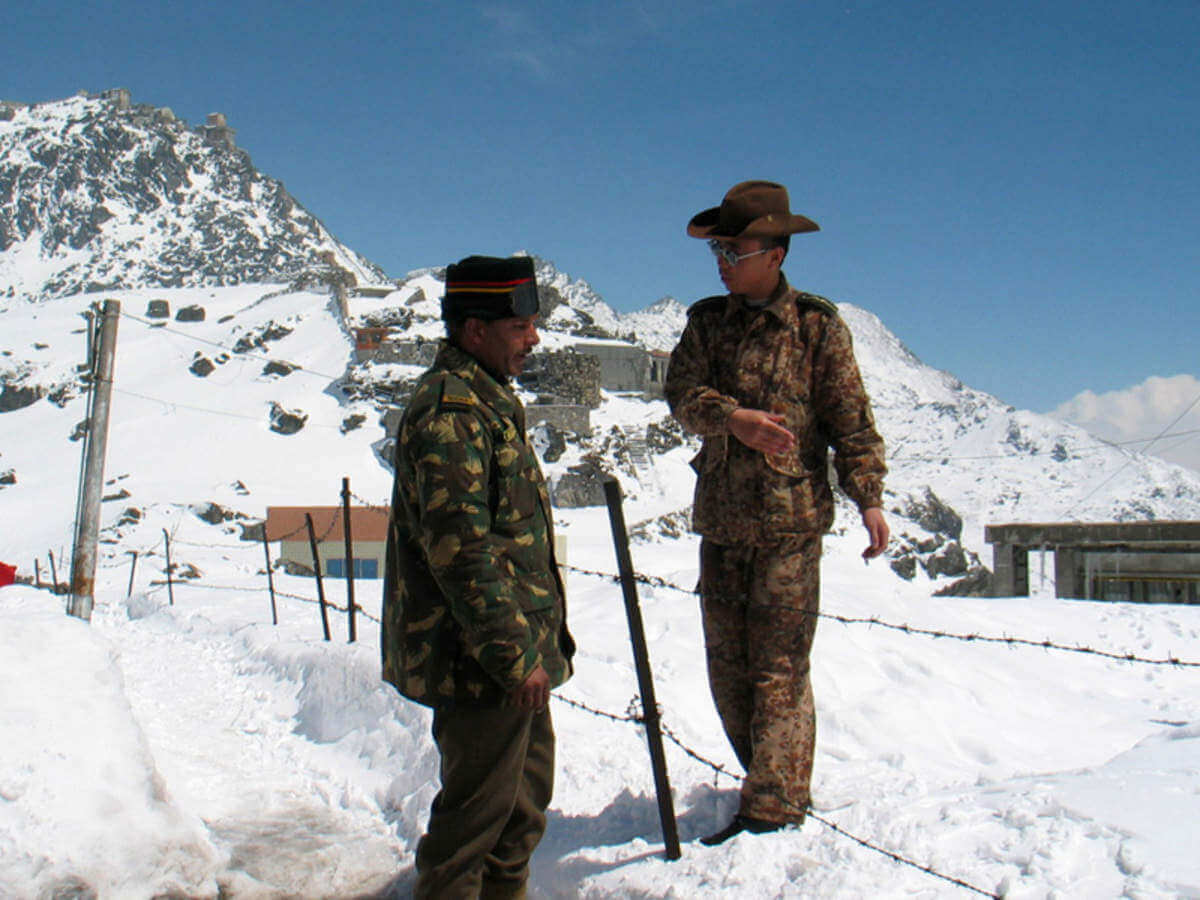In what is being referred to by Indian officials as “mirror deployment”, Indian troops increased their military presence along the disputed India-China border. The Indian Army deployed “additional division strength-level forces” to three different locations. Further, the Indian Armed Force has increased its flying activity in Ladakh. This is in response to reports that the Chinese army has deployed an additional 2,500 troops to the region. In fact, both armies are reported to be bringing in “heavy equipment and artillery, including artillery guns and combat vehicles”.
The two sides are locked in a face-off at four locations. Three of these are in Galwan, and one is at Pangong Tso. India has increased its troop presence in Ladakh, north Sikkim, Uttarakhand, and Arunachal Pradesh. National Security Adviser Ajit Doval has also been keeping a close eye on events along the Line of Actual Control (LAC) in Ladakh and in north Sikkim and Uttarakhand. Army sources claim that Chinese troops have also engaged in “aggressive posturing” in Pangong Tso Lake, Demchok, and Daulat Beg Oldi.
Y.K. Joshi, the Northern Army Commander Lieutenant General, arrived in Ladakh on Tuesday. The purpose of the visit was to assess the growing tensions along the Line of Actual Control (LAC). Officials claim that 14 Corps–the Army division that is permanently deployed to defend Ladakh–have sufficient strength and resources to tackle the Chinese attack in the region. There have been multiple incursions across the LAC into Indian territory by the Chinese People’s Liberation Army (PLA), including in the Galwan valley, which is not a disputed area.
Also Read: Multiple Chinese Army Incursions Reported Along LAC, Indian Army Chief Takes Stock
China is strongly opposed to India’s infrastructural development in the region, and is particularly angered by projects in the Pangong Tso Lake region and the Galwan area. They claim that the ramping up of the infrastructure in the region by China is in response to India’s construction of the road along the Shyok River to Daulet Beg Oldi, which is considered to be the “the most remote and vulnerable area along the LAC in Ladakh.”
However, India insists that these projects are firmly within its own territory. India is currently building 61 Indo-China Border Roads (ICBRs) under the Border Roads Organization (BRO), while China is building underground tunnels and building an airport with tarmac for helicopters and combat aircraft,
Nevertheless, Chinese officials stand by their commitment to resolve the issue with India amicably. Foreign Ministry spokesperson Zhao Lijian said, “On the China-India border issue, China has always followed in real earnest the consensus reached between leaders of the two countries, strictly abided by signed agreements, and stayed committed to safeguarding national territorial sovereignty and security as well as maintaining peace and stability in the border areas.”
The current stand-off is crucial for two reasons. Firstly, the disputed region is strategically important for India. If China occupies the Pangong lake, and Chinese forces house themselves in Shyok, India will lose its access to the Nubra Valley and Siachen. This will make it impossible for India to defend Ladakh. Secondly, while the region has always been active, such incidents are generally resolved by the intervention of the local military in the area, which is the 14 Corps for India. However, the increasing deployment in the region by both countries could prospectively indicate a graver situation along the LAC.
Previously, American President Donald Trump offered to mediate the dispute. Both China and India showed reluctance to accept this offer, contending that the situation was manageable through bilateral dialogue. Last Wednesday, Zhao Lijian said that the border situation with India was “overall stable and controllable.” He added, “between the two countries, we have good border-related mechanisms and communication channels. We are capable of resolving the issues properly through dialogue.”
Also Read: Donald Trump Offers to “Mediate” India-China Border Dispute
India, too, refused Donald Trump’s offer. Anurag Srivastava, the spokesperson for the Ministry of External Affairs, reassured that the two countries were working on a peaceful resolution to the issue. He also said that India and China were focussing on both “military and diplomatic” coordination to end the standoff as soon as possible. Further, several unnamed officials clarified that the last conversation between Prime Minister Modi and President Trump occurred on April 4, wherein the two spoke on the issue of exporting Hydroxychloroquine.
In fact, on Saturday, Defence Minister Rajnath Singh said that bilateral talks were taking place at both military and diplomatic levels.
India-China Border Dispute Coverage:
- PM Modi Meets With Top Military Brass to Discuss Escalating Indo-China Border Tensions
- India-China Skirmishes in Sikkim and Ladakh Leave Several Soldiers Injured
- Indian Army Chief Addresses Simmering Tensions with Nepal, China, and Pakistan

